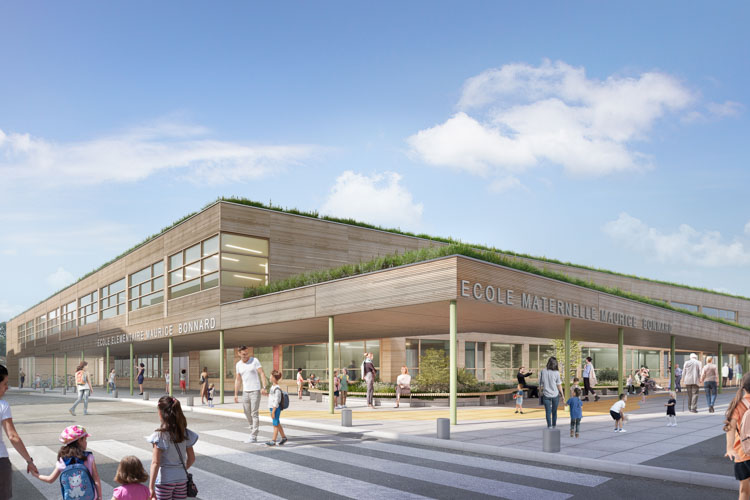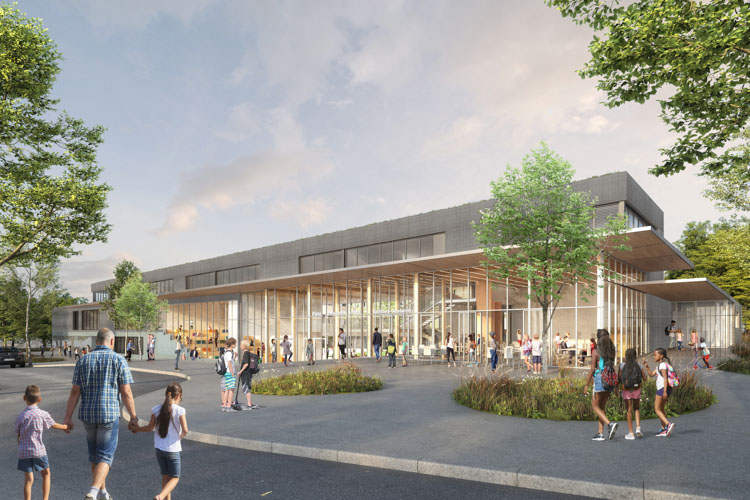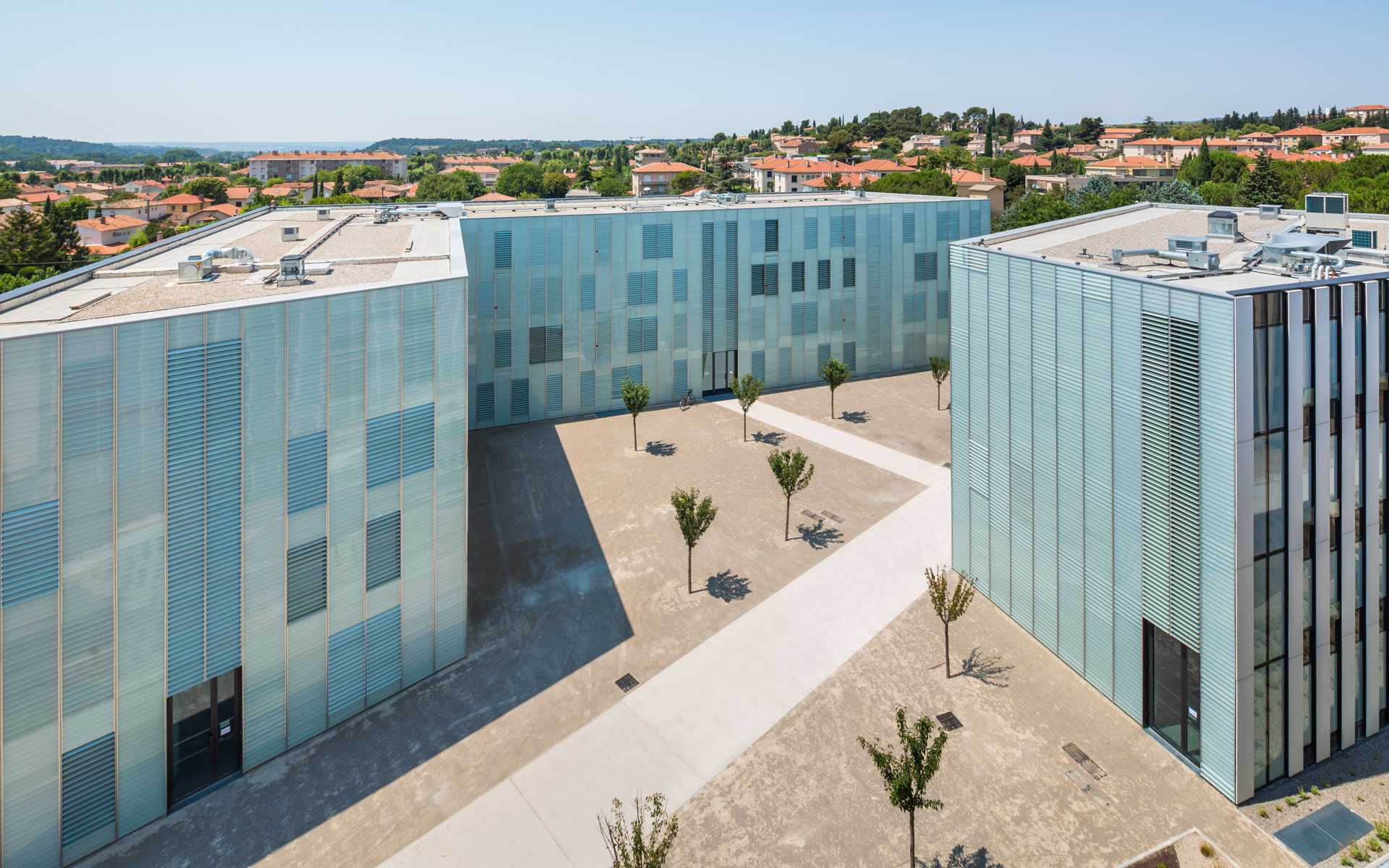
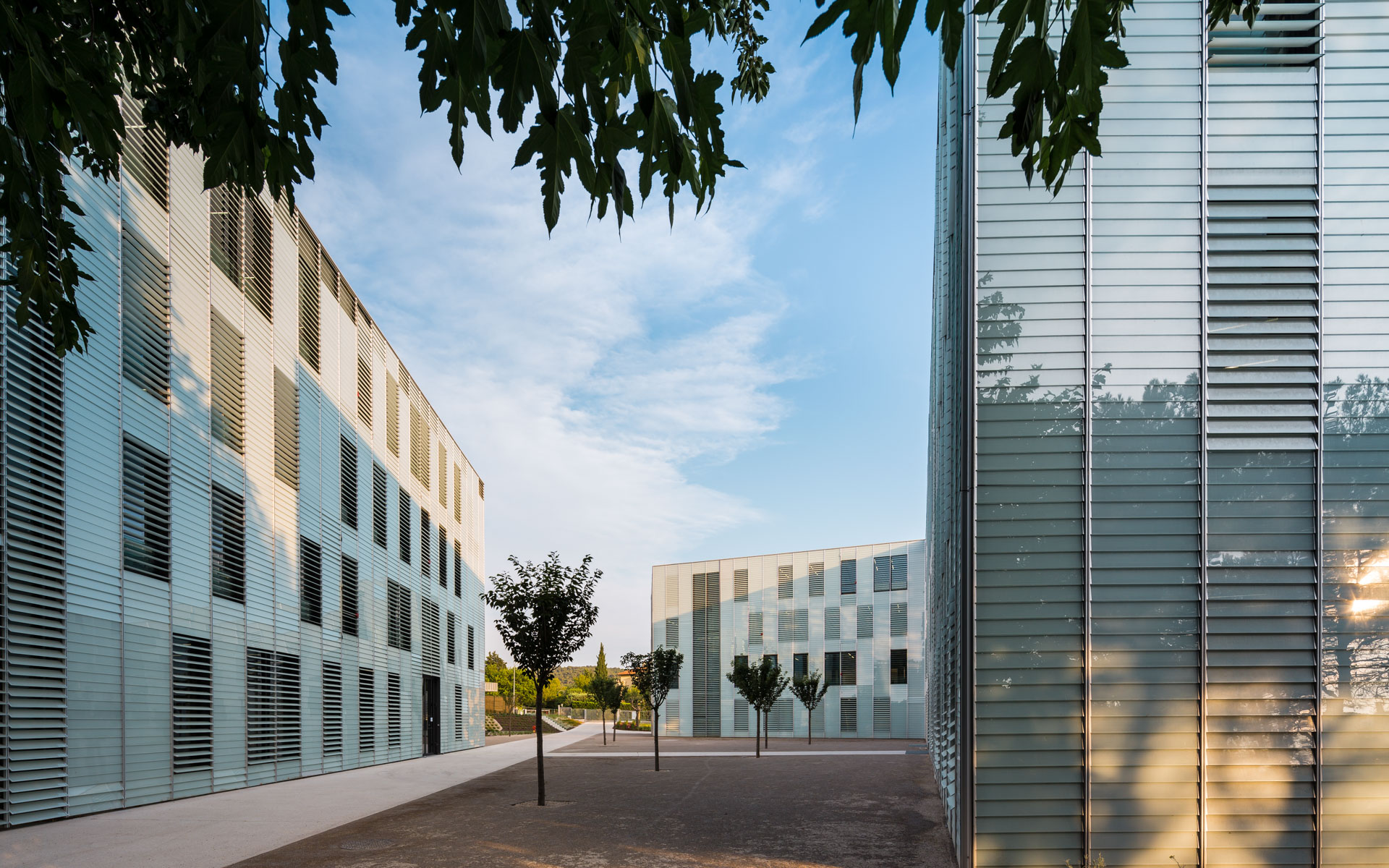
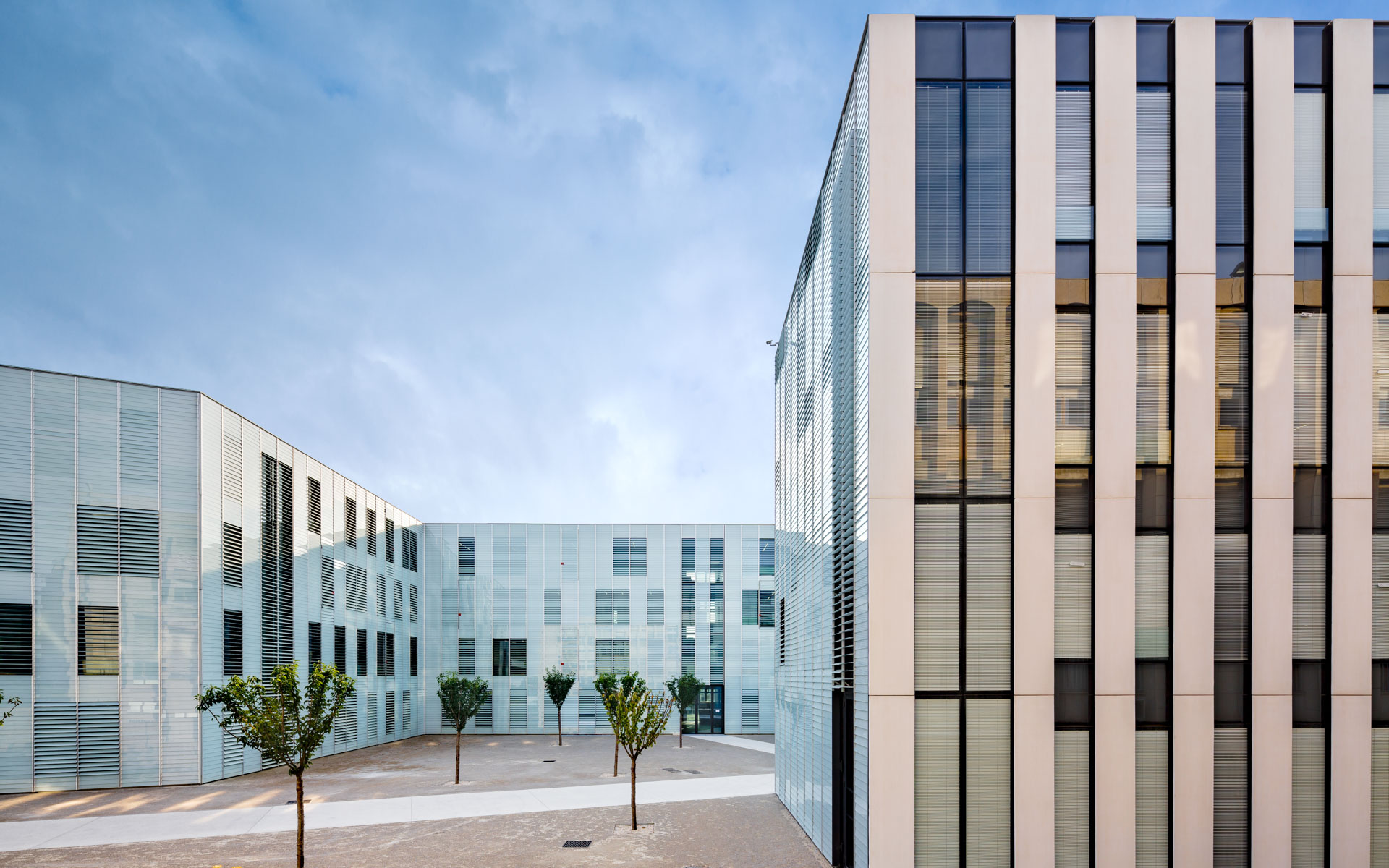
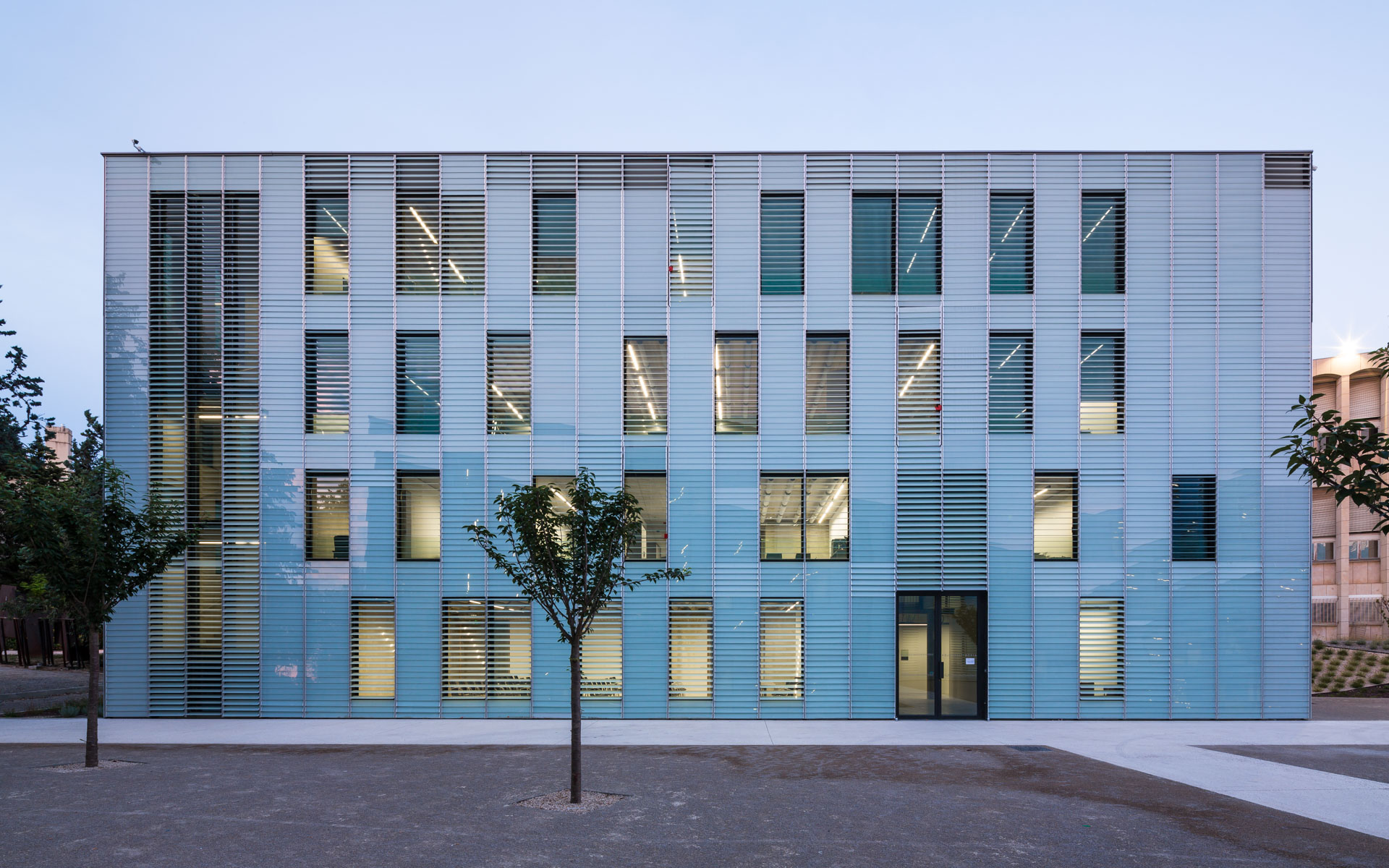

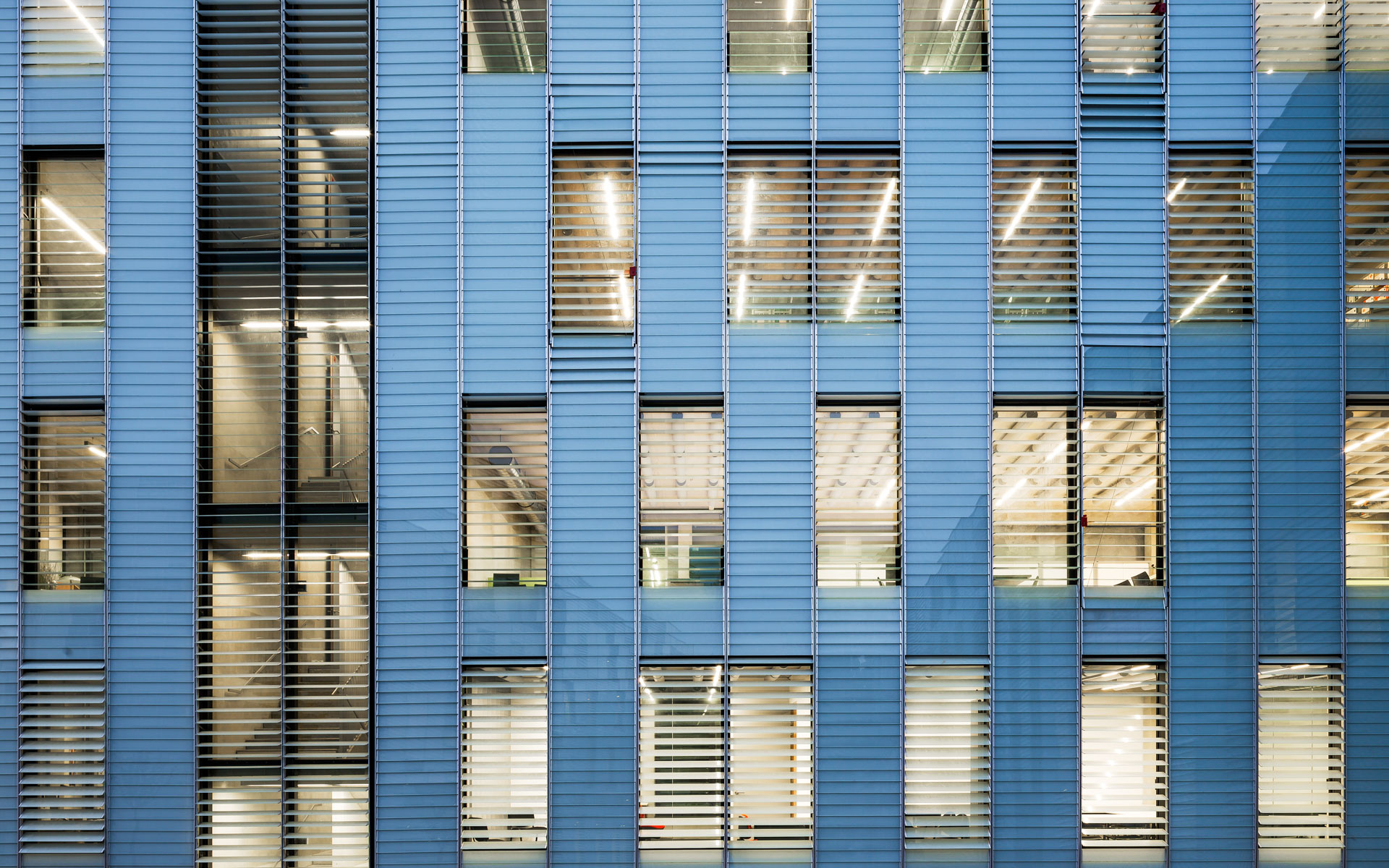
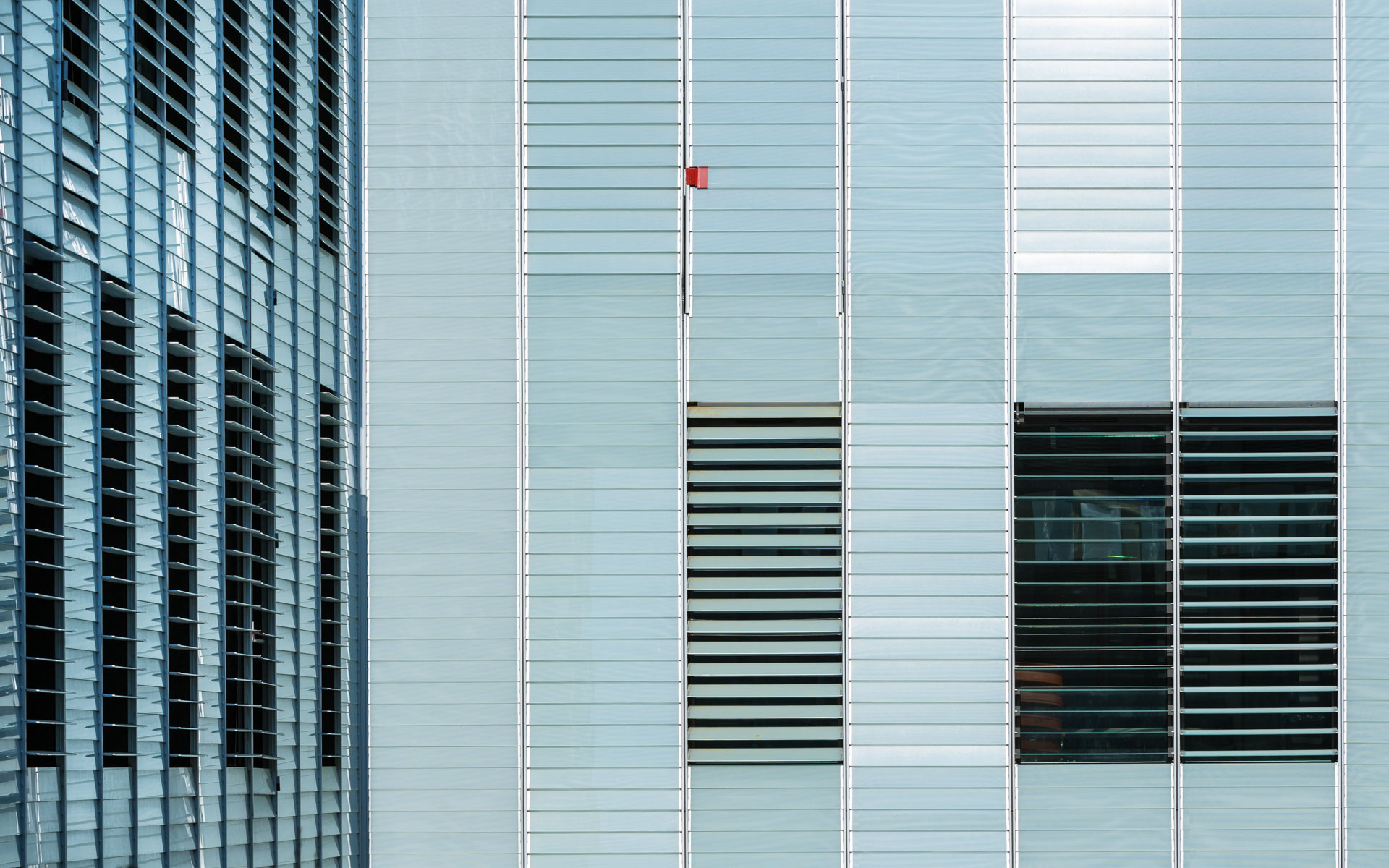
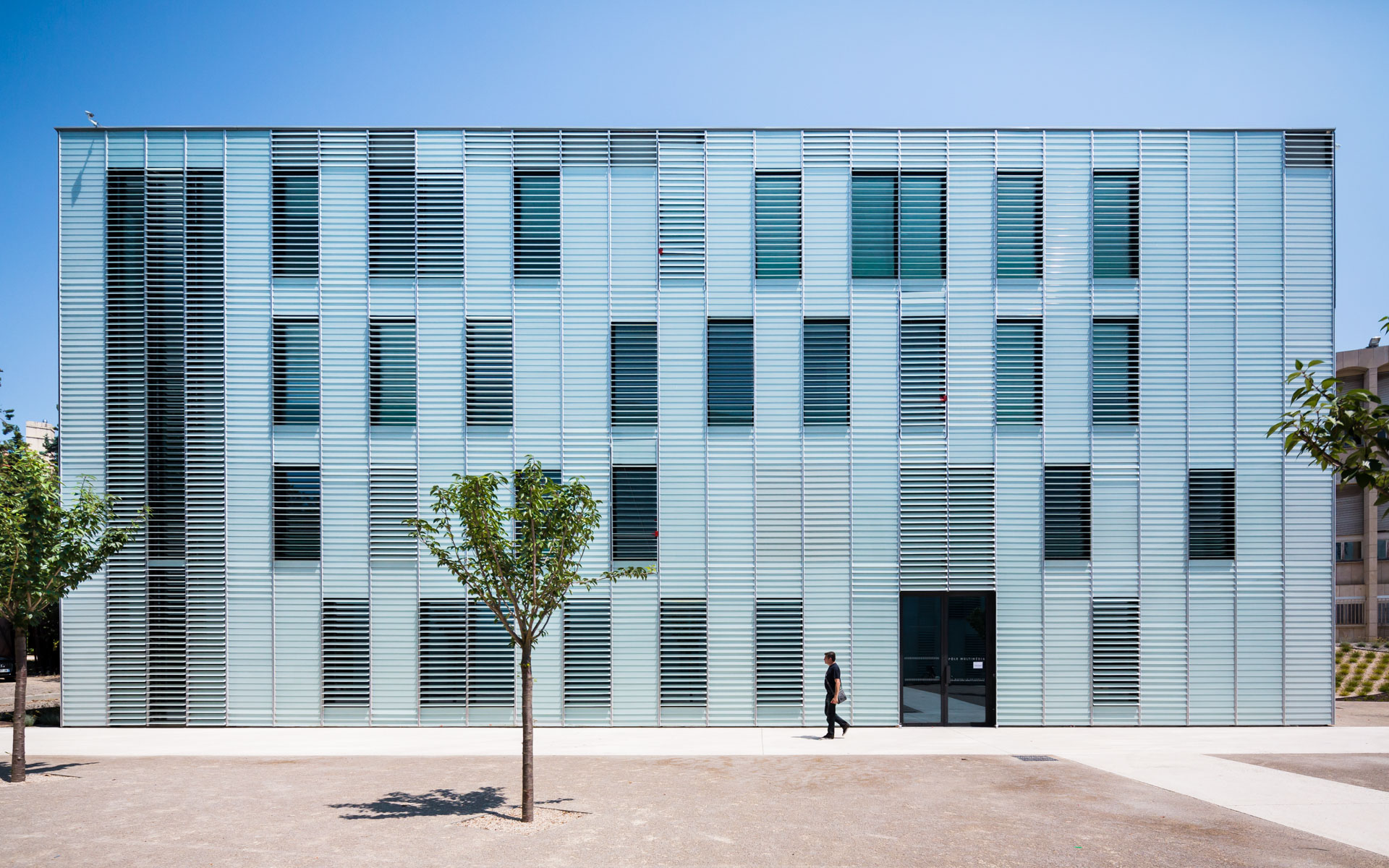
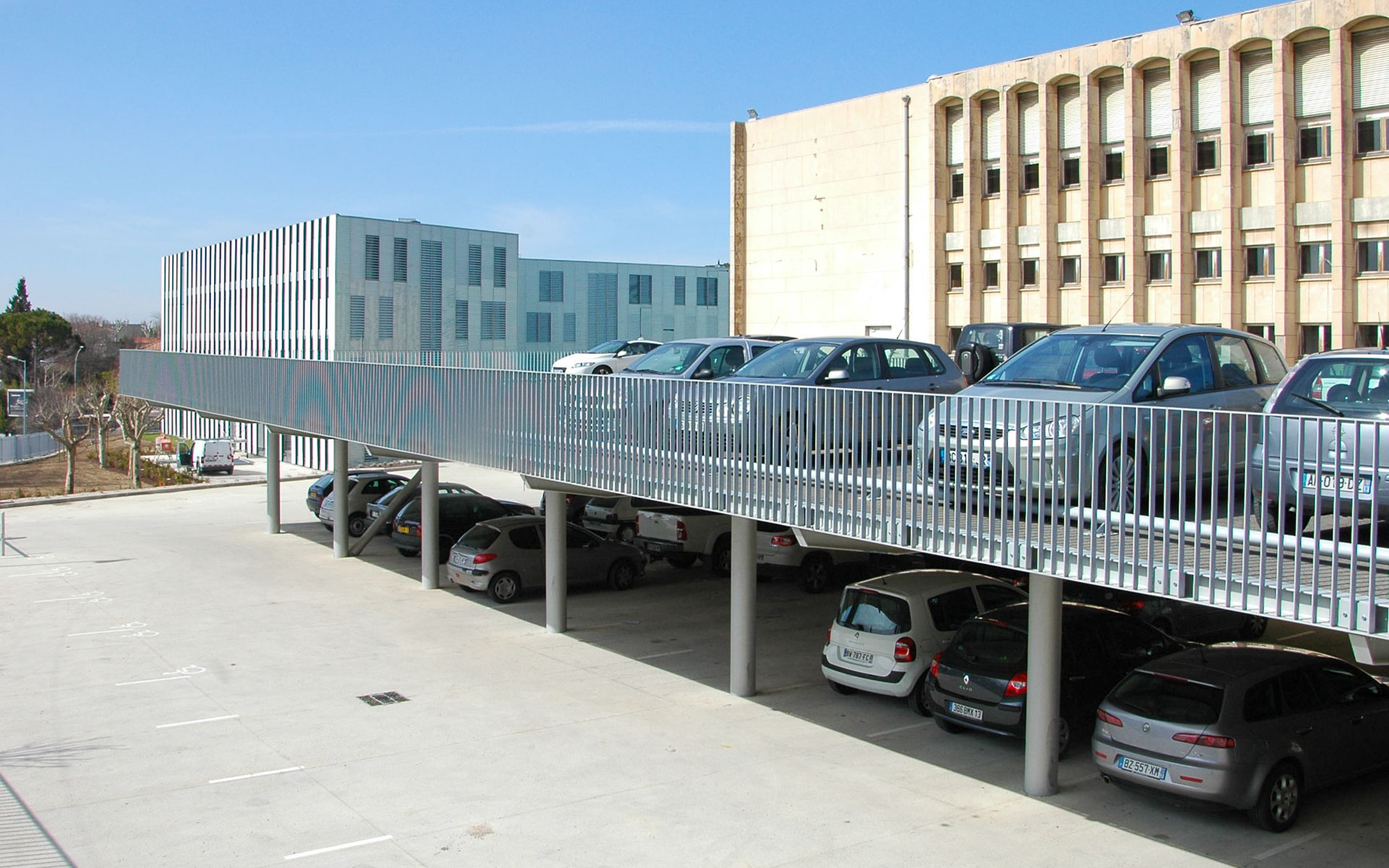
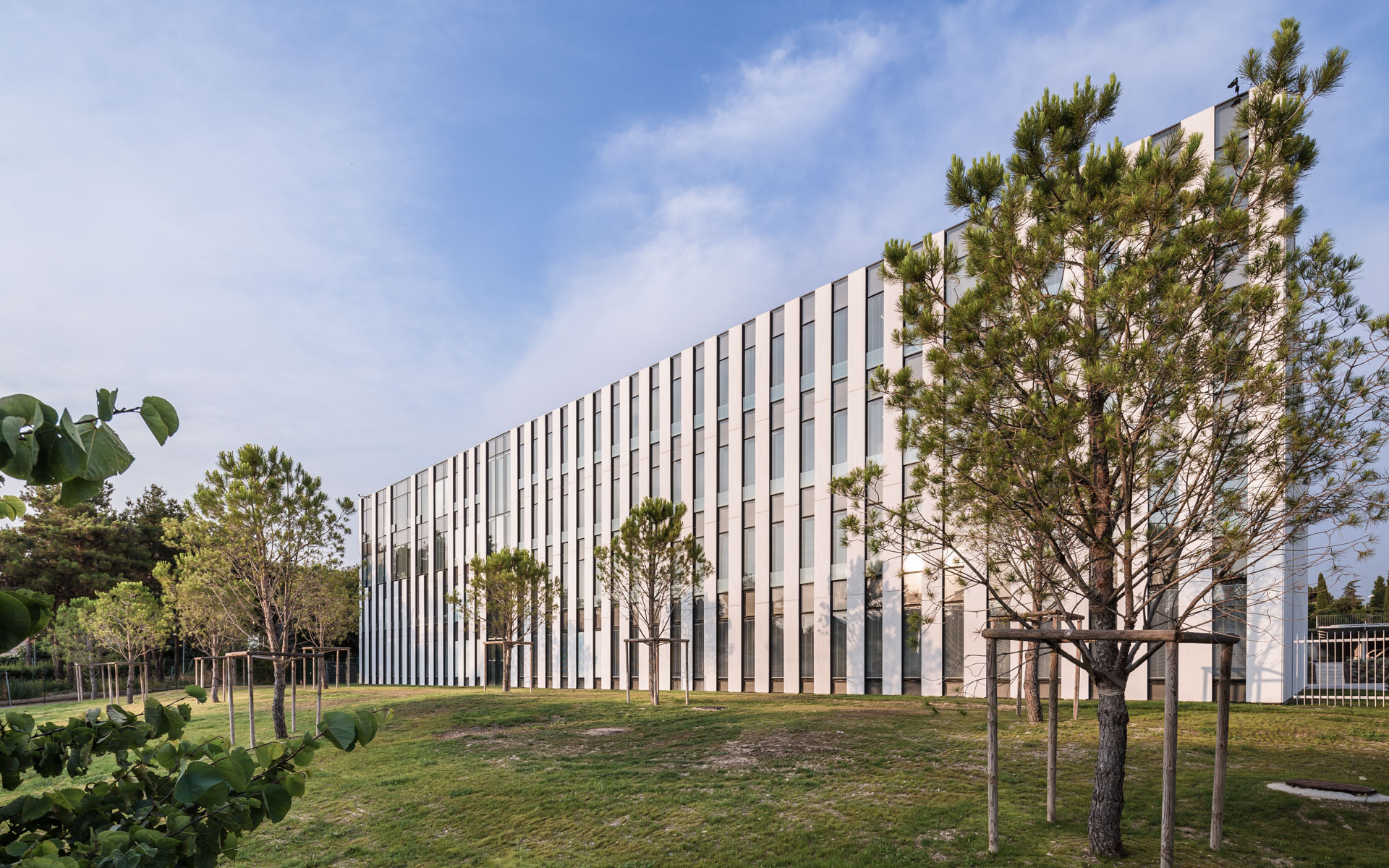
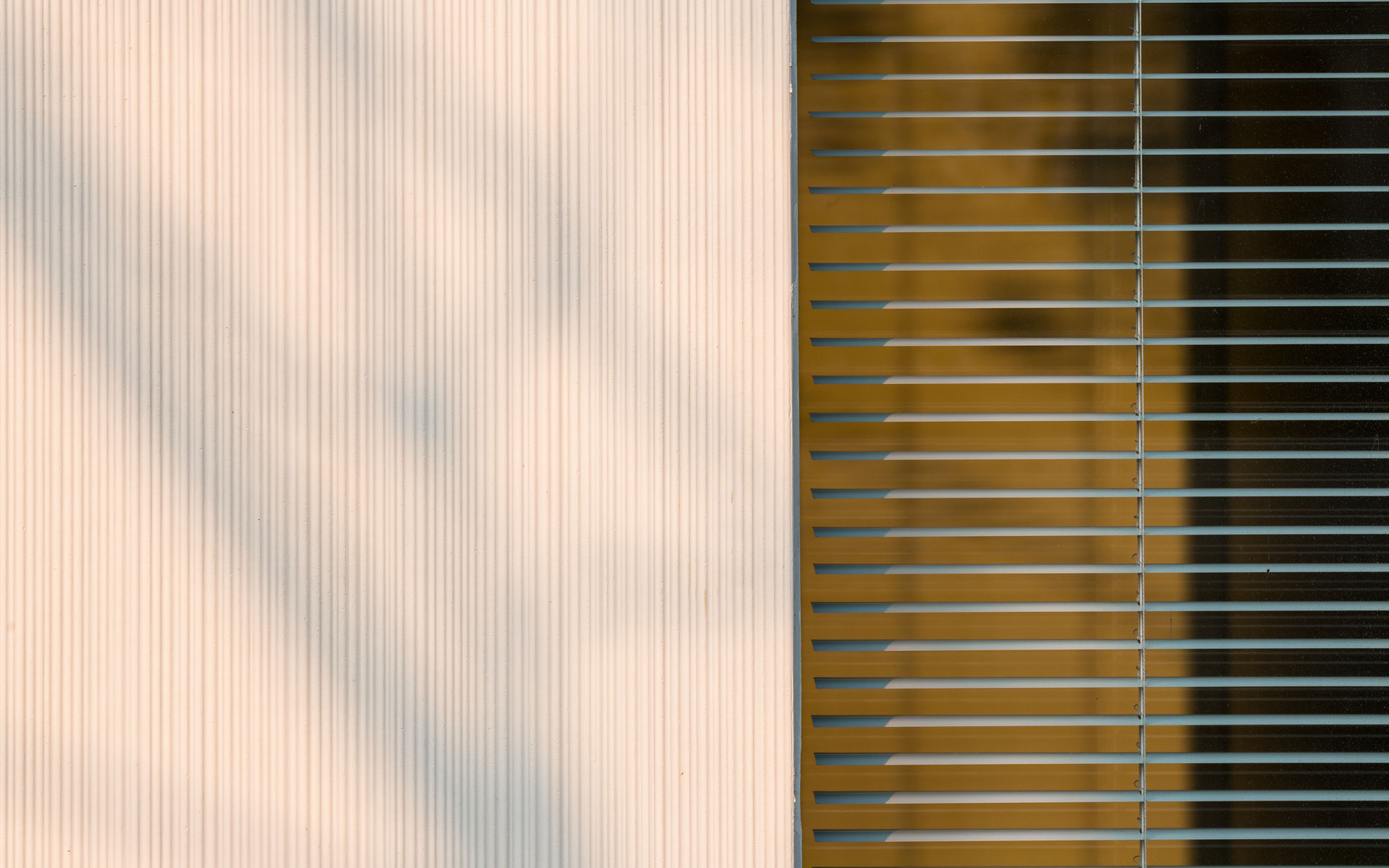
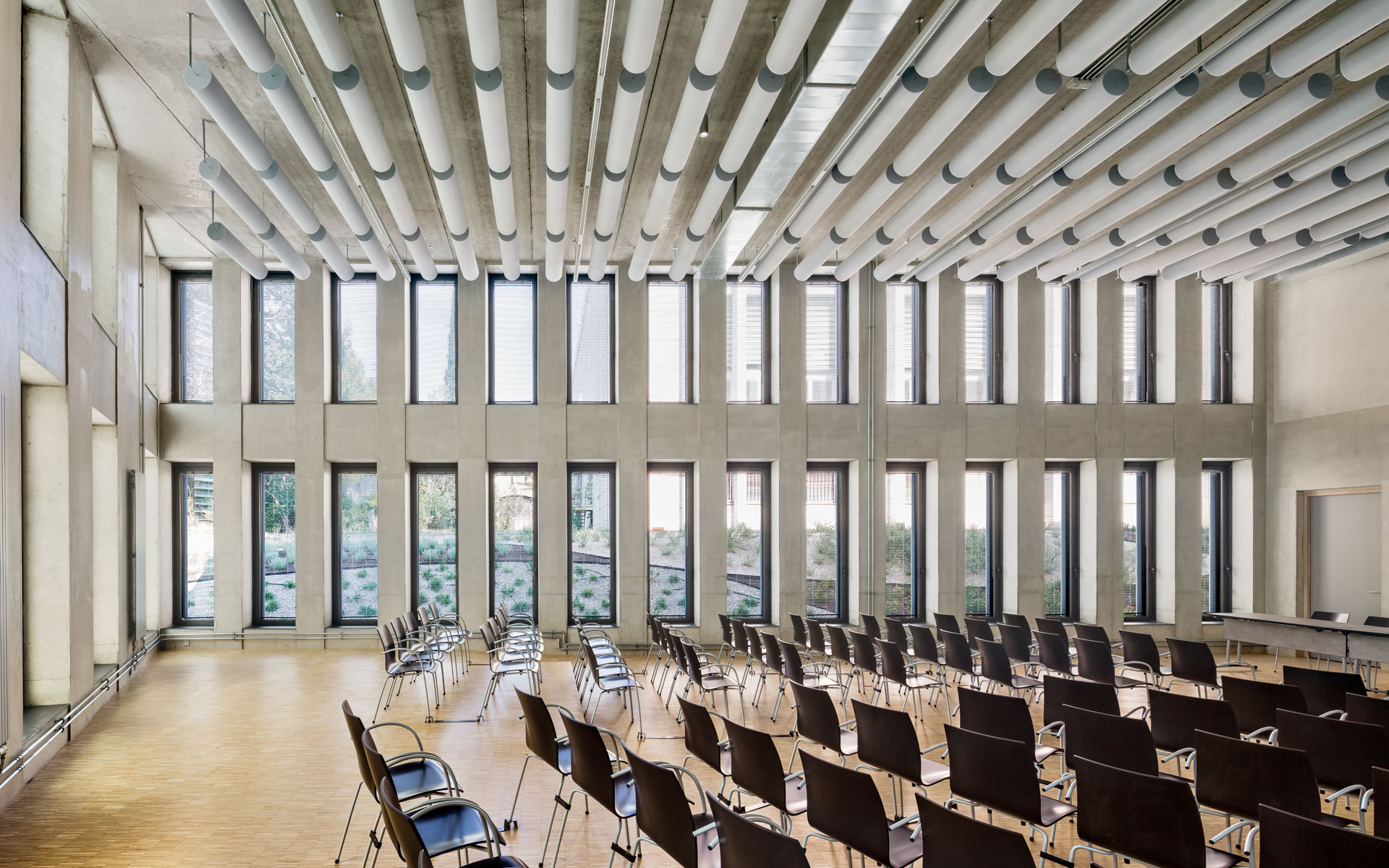
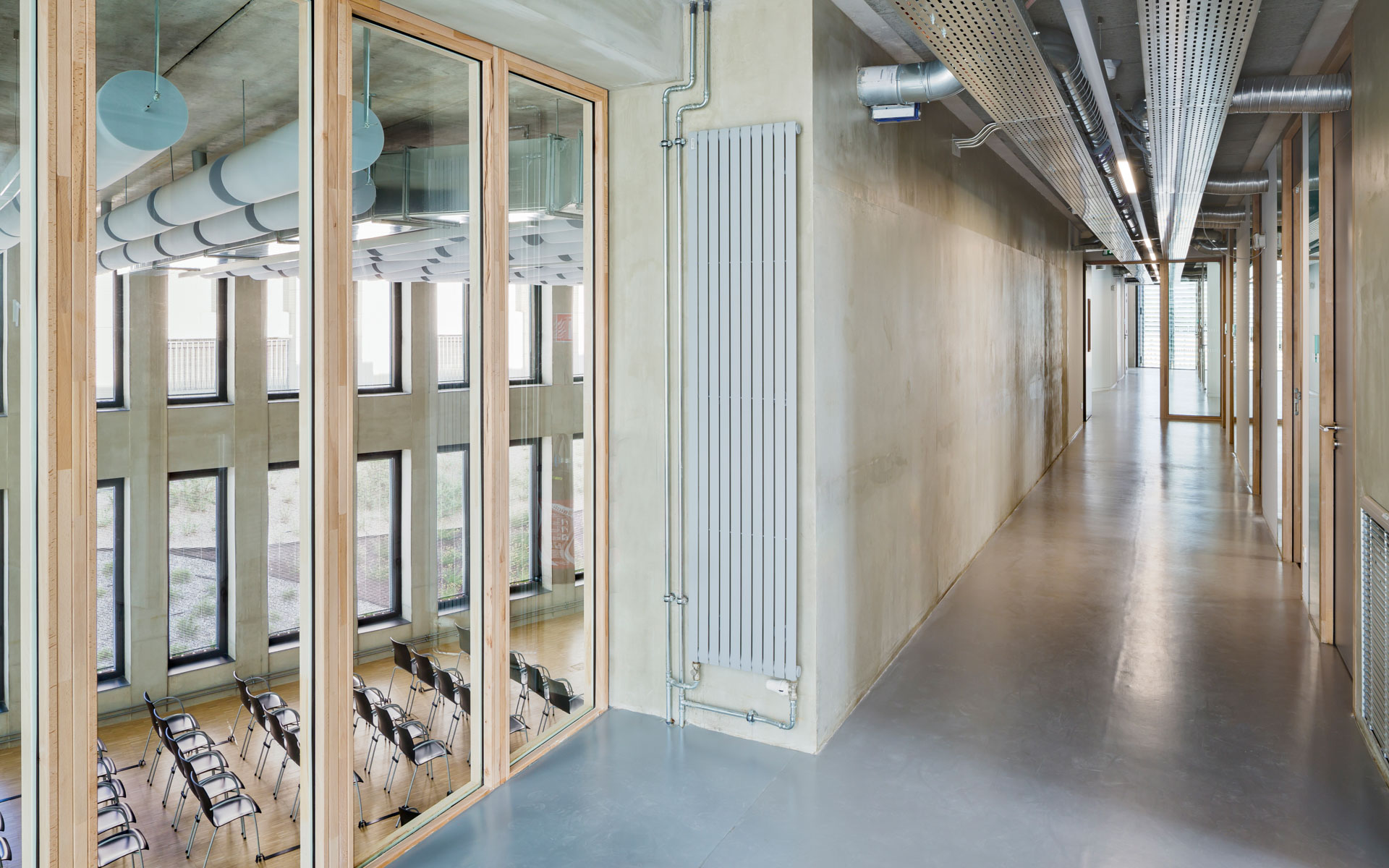
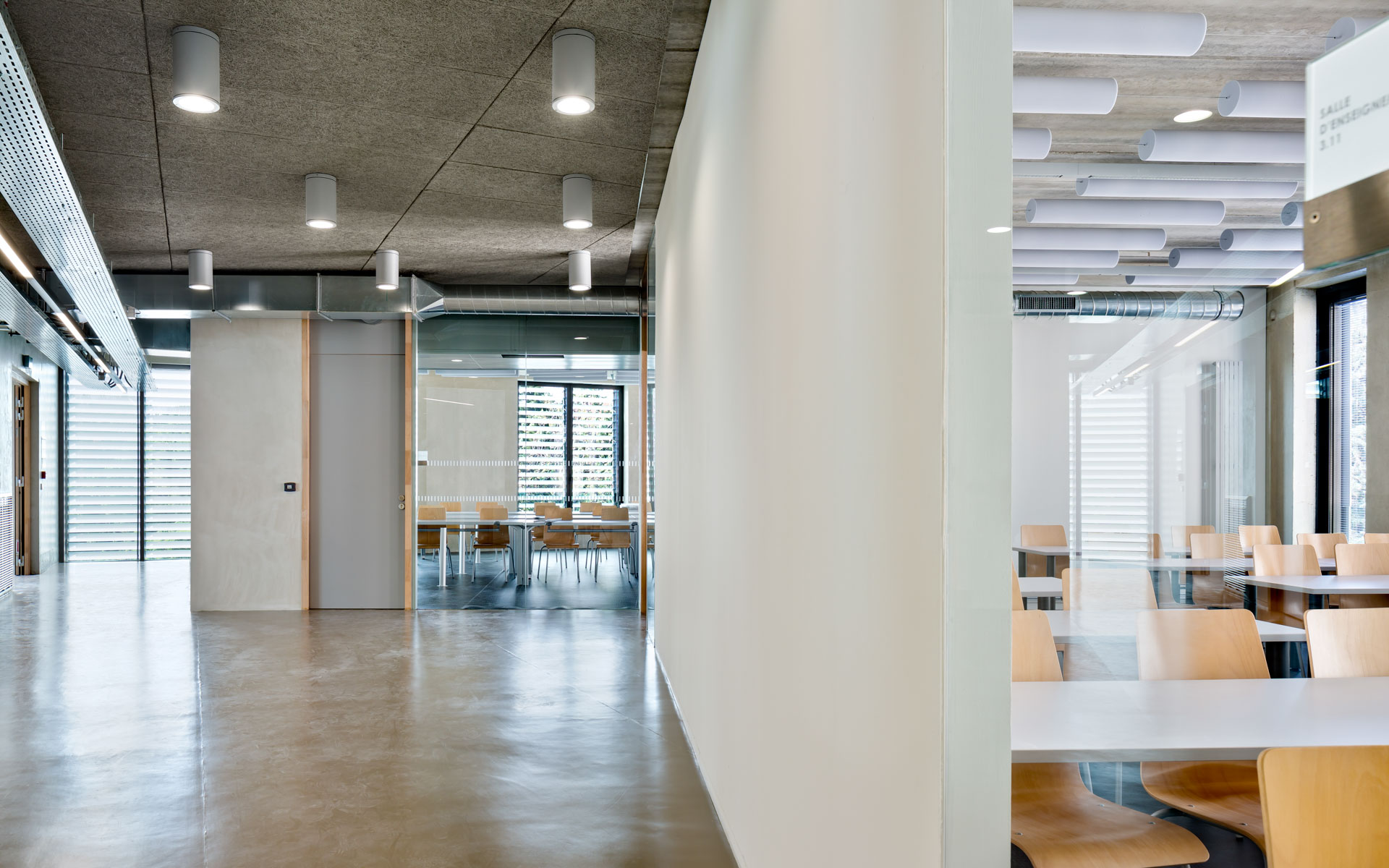
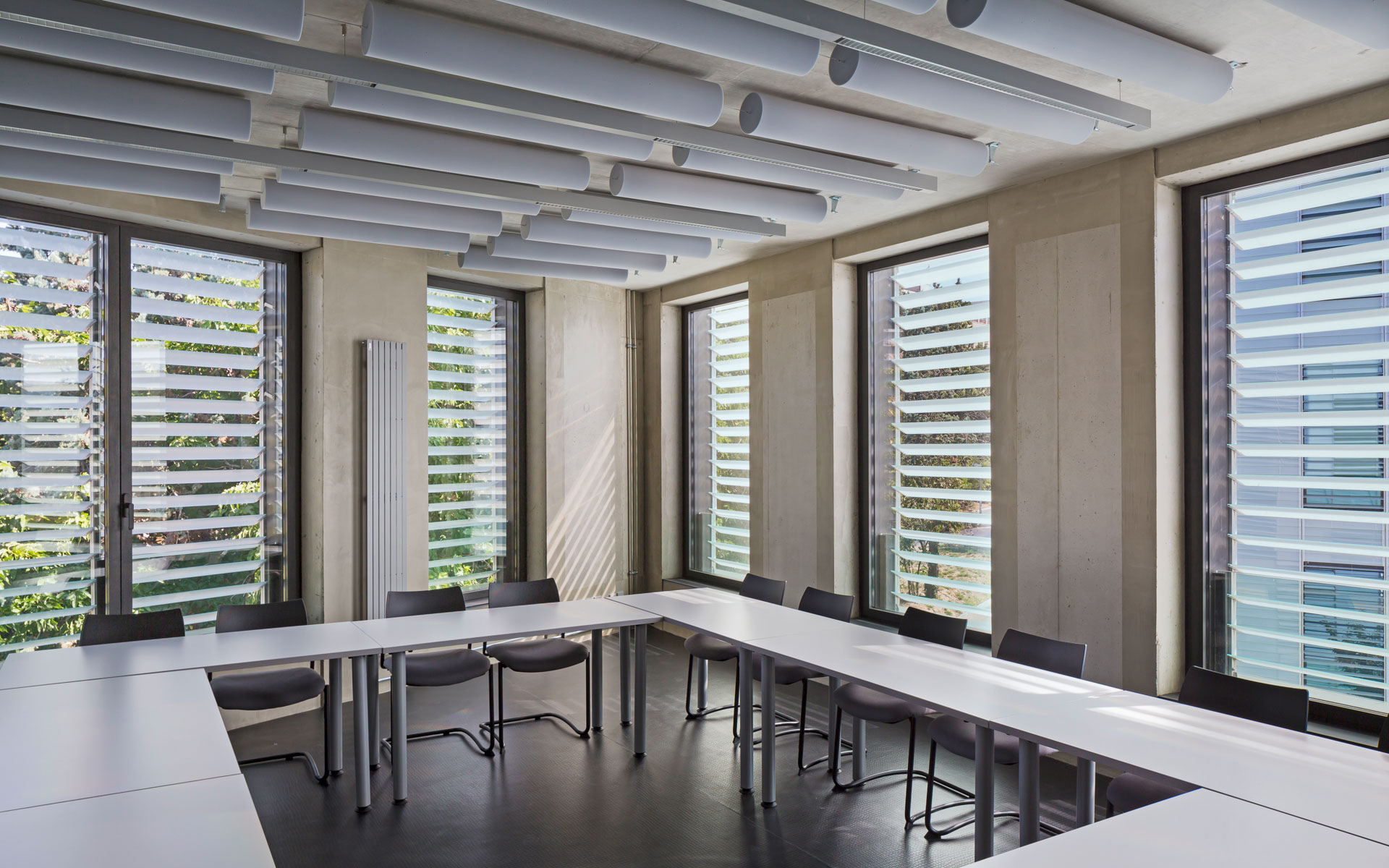
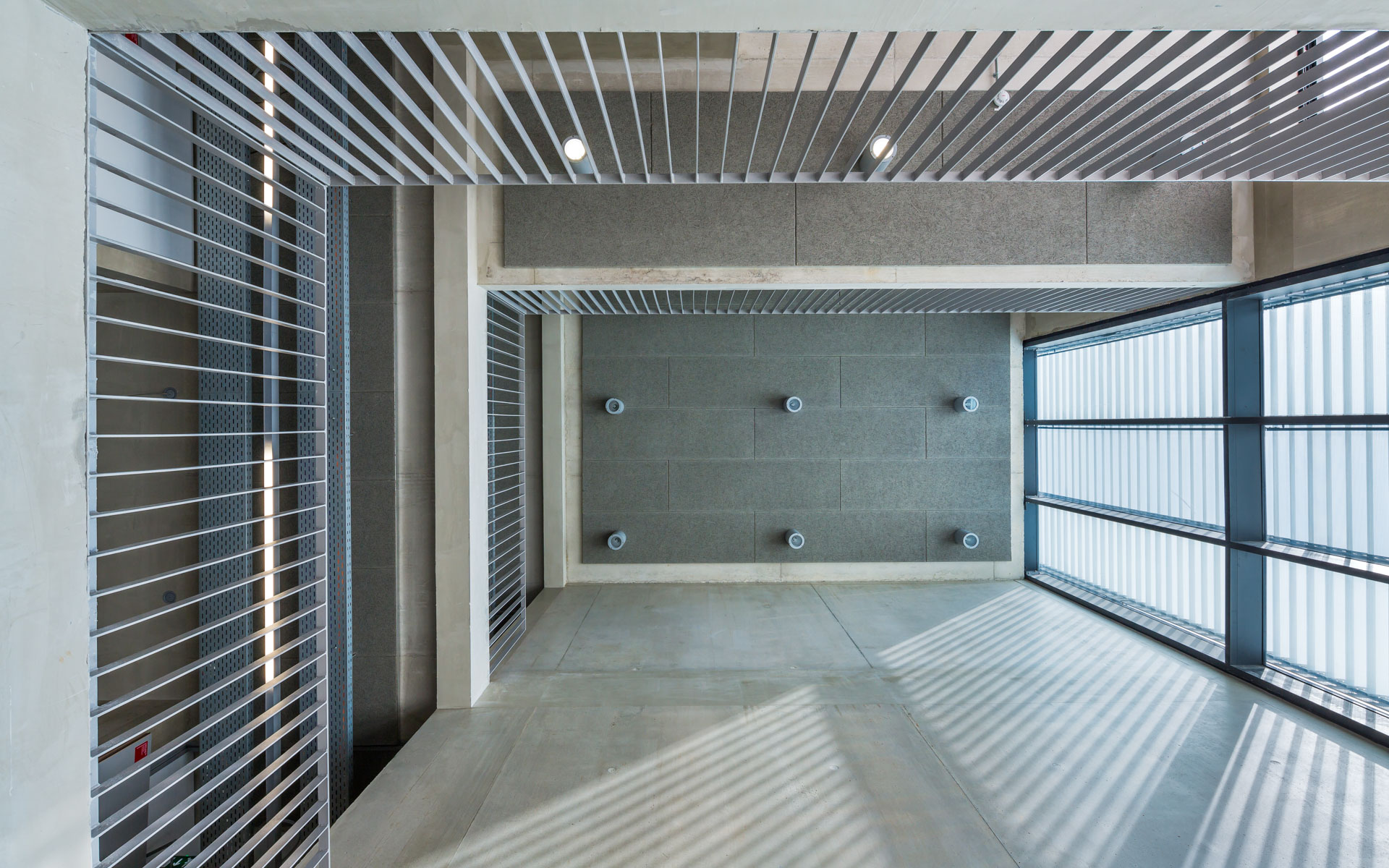
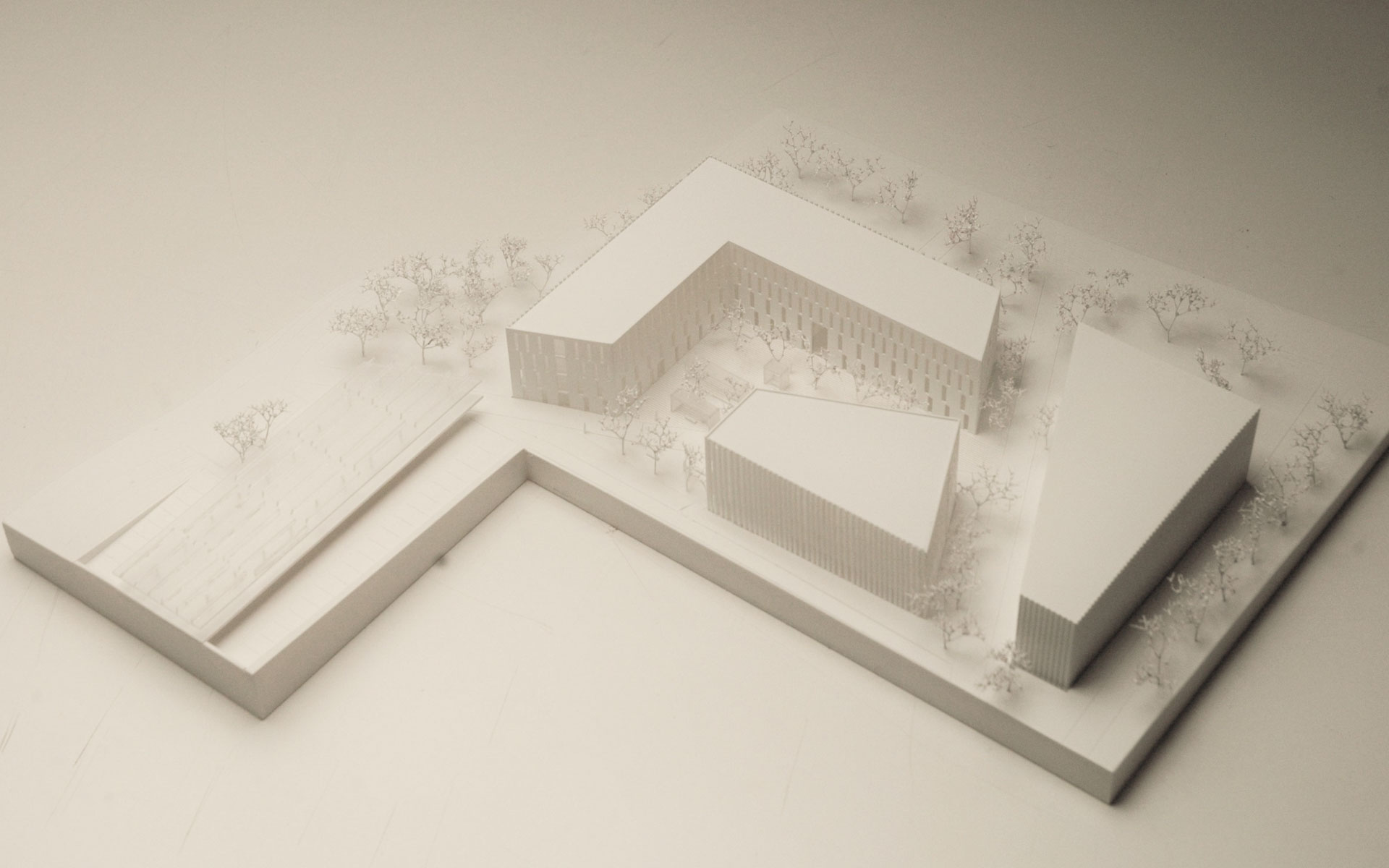
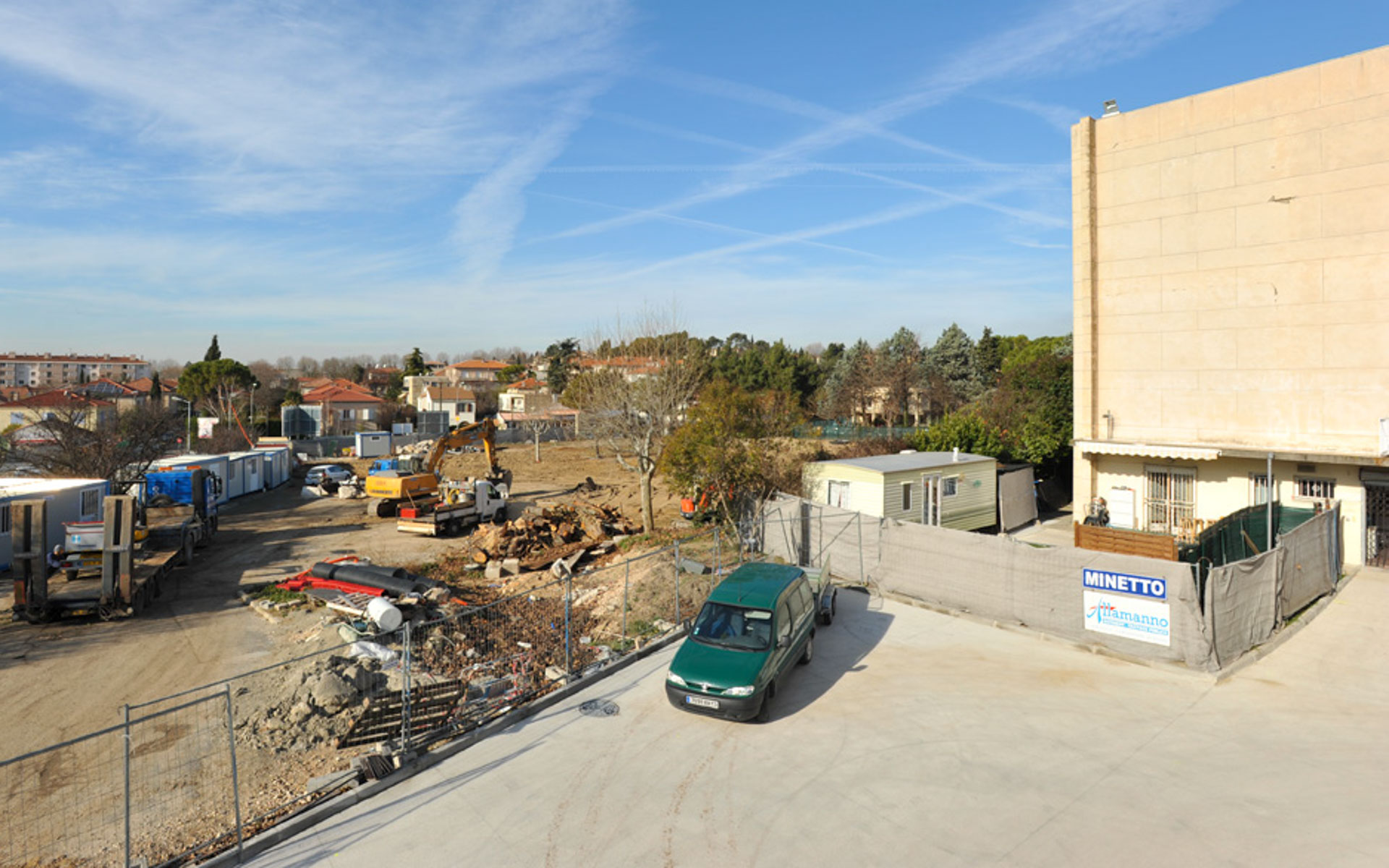
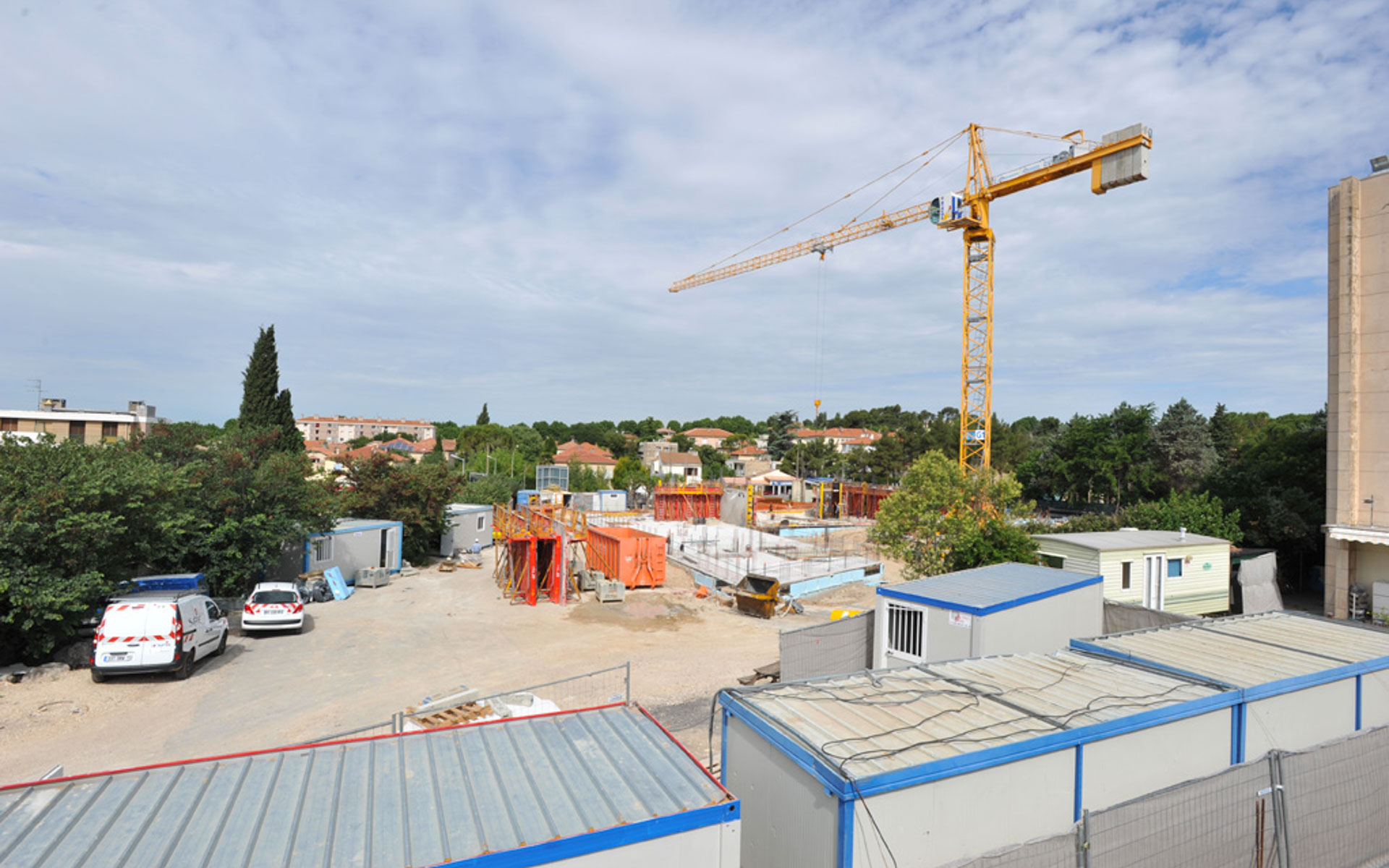
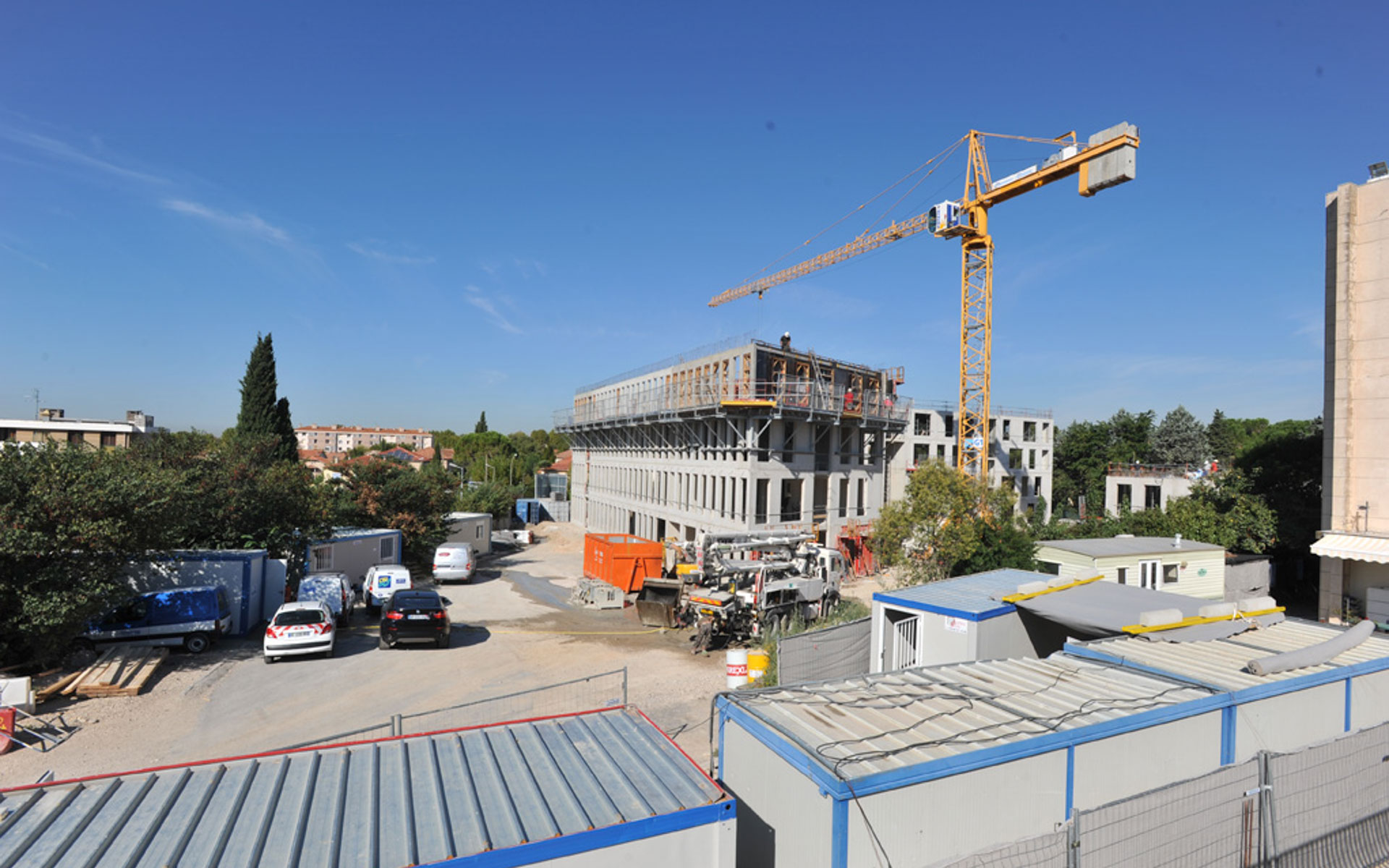

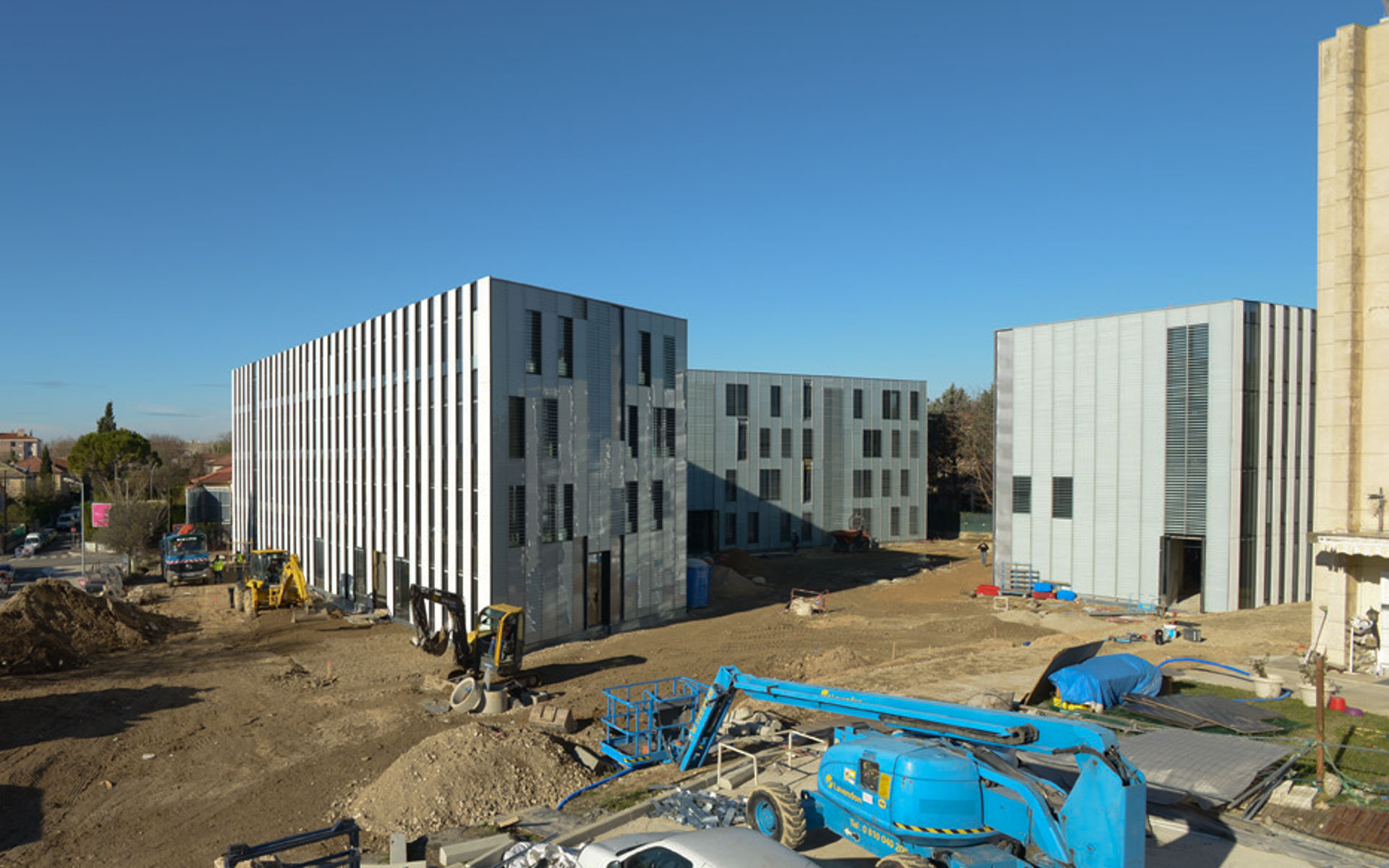
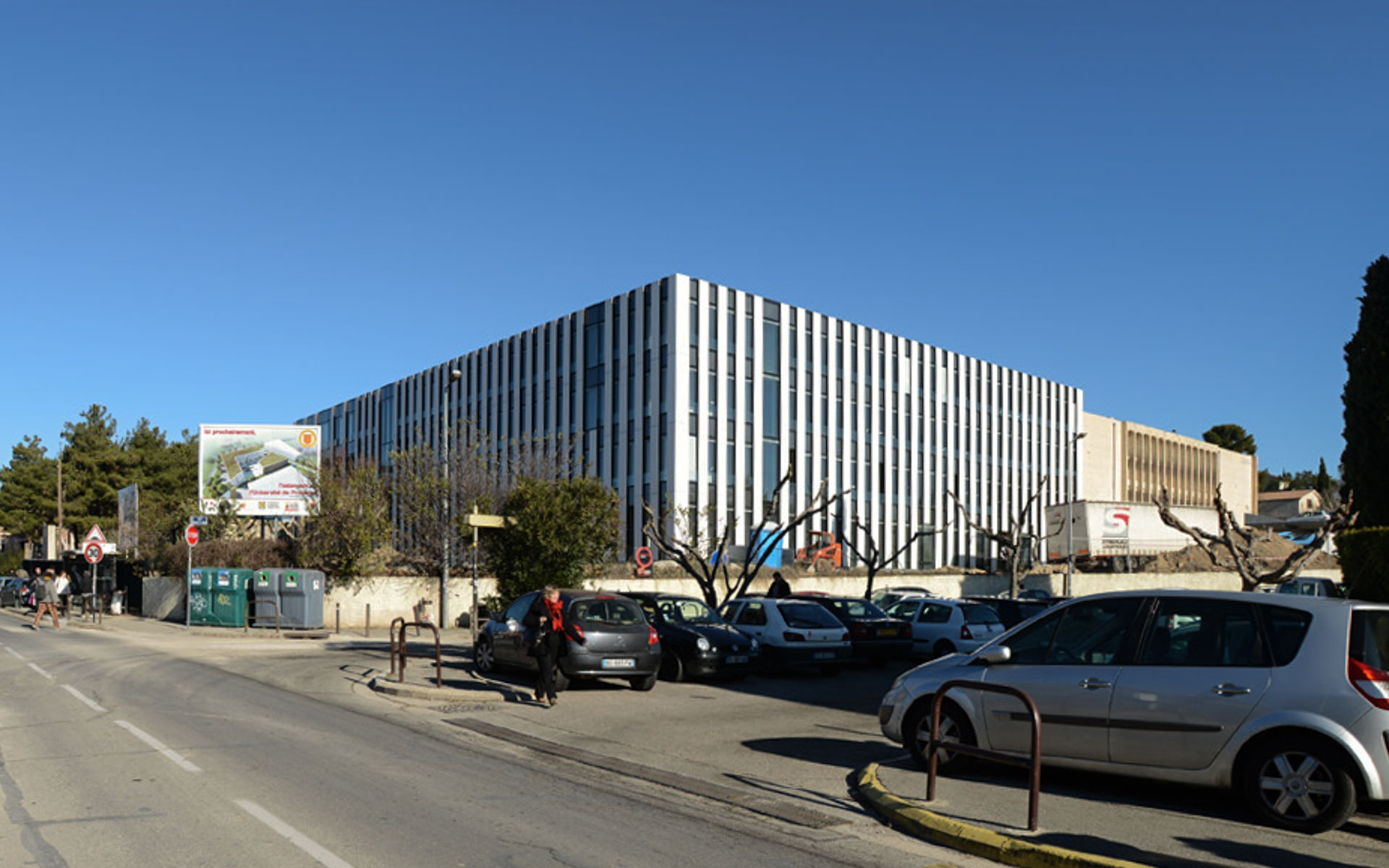














































University of Provence
Aix-en-Provence |
France –
2015
Client
Aix-Marseille Université
Start of construction
04 | 2010
Size
8 037 m²
Construction budget
15.2 M€
Competition winner
2008
Completion
05 | 2015
The University of Provence in Aix-en-Provence has undergone a significant expansion that includes an arts and humanities faculty, a multimedia center, and an administrative building. This new ensemble enhances the public space of the Centre Schuman and provide a representative facade to the city along Rue Schuman.
A major gesture is not always needed. In further developing a campus that dates originally from the 1960s the studios design shows that added value can be better achieved through restraint, carefully positioned cubes, and subtle facade rhythms than by the use of showy sculptural symbols. The extension structure is rectangular and divided by two central axes. This design splits the building volume into three separate buildings and a central forum, serving as a gathering spot. The way the three blocks are laid out also offers the advantage of protecting this space from the Mistral. The square is designed to be accessible to everyone. It absorbs rainwater, trees provide shade, and the surrounding green spaces function as filters. An apart two-story parking deck offers 82 parking spots, ensuring the main campus remains traffic-free.
The concept strives for a close relationship to the existing buildings. These buildings are characterized by a striking architectural signature: an emphatic repetition of arcades that produces a compressed vertical rhythm. The cladding of light ochre-colored concrete panels was intended to allow these buildings blend with the landscape of Provence. The design reinterprets this rhythm and verticality but in a minor key, so to speak, as it used the NACO glazing system for all the facades. This very simple and economical system consists of series of screen-printed glass louvres that can be turned around their center axis and overlap slightly to ensure air tightness. By adjusting the louvres, the marvelous light in Provence, whose intensity drove Van Gogh mad, can be modified. The grid of NACO elements that runs up the entire height of the facade provides the vertical quality aimed at. The facades are treated differently, depending upon their position. The fronts facing onto the courtyard consist entirely of NACO bands. This creates homogeneity in the surfaces.
The external skin here becomes a kind of wallpaper, strengthening the spatial coherence of the place and its outdoor character. In the outward facing facades that address the old buildings the bands of NACO elements alternate with piers made of thin fiber concrete panels. Here the classic rhythm of solid and empty surfaces reveals the construction system. The structure consists of reinforced concrete load-bearing walls in which identical solid and empty areas alternate within a compressed grid. The low loads meant that no internal columns were needed. Inside the concrete was left exposed in all the rooms. Long cylindrical acoustic elements fixed to the ceilings of the lecture halls and offices increase the absorption surface area and ensure good acoustics.
The concrete mass contributes to the buildings thermal inertia and takes into account the climatic conditions of the region with marked differences between day and night-time temperatures. Only the lecture halls have an air-cooling system. In the other rooms traditional methods are used to ensure comfort: large amounts of external insulation in the solid areas, triple protection for the glazed areas: double glazing, awnings and the NACO system on the facade. When the louvres are closed the transmission of light into the space is reduced by 70%. Like in houses in Provence where the window shutters are closed during the day to protect against heat and opened at light to allow cool air to flow inside, here, too, thermal comfort is dependent on the behavior of the users of the space. “I prefer nature to technology”, says Dietmar Feichtinger.
Architect: Dietmar Feichtinger Architectes
Structural Consultants: Arc
Landscape Architect: Marc Richier
Hvacr planning, Electrical consultant: Inex
Economist: Aei
Acoustic planning: Peutz & Associés
Technical controller: Qualiconsult
Safety controller: Qualiconsult
Fire protection coordination: Analyfeu
Site coordination: Ouest Coordination
A major gesture is not always needed. In further developing a campus that dates originally from the 1960s the studios design shows that added value can be better achieved through restraint, carefully positioned cubes, and subtle facade rhythms than by the use of showy sculptural symbols. The extension structure is rectangular and divided by two central axes. This design splits the building volume into three separate buildings and a central forum, serving as a gathering spot. The way the three blocks are laid out also offers the advantage of protecting this space from the Mistral. The square is designed to be accessible to everyone. It absorbs rainwater, trees provide shade, and the surrounding green spaces function as filters. An apart two-story parking deck offers 82 parking spots, ensuring the main campus remains traffic-free.
The concept strives for a close relationship to the existing buildings. These buildings are characterized by a striking architectural signature: an emphatic repetition of arcades that produces a compressed vertical rhythm. The cladding of light ochre-colored concrete panels was intended to allow these buildings blend with the landscape of Provence. The design reinterprets this rhythm and verticality but in a minor key, so to speak, as it used the NACO glazing system for all the facades. This very simple and economical system consists of series of screen-printed glass louvres that can be turned around their center axis and overlap slightly to ensure air tightness. By adjusting the louvres, the marvelous light in Provence, whose intensity drove Van Gogh mad, can be modified. The grid of NACO elements that runs up the entire height of the facade provides the vertical quality aimed at. The facades are treated differently, depending upon their position. The fronts facing onto the courtyard consist entirely of NACO bands. This creates homogeneity in the surfaces.
The external skin here becomes a kind of wallpaper, strengthening the spatial coherence of the place and its outdoor character. In the outward facing facades that address the old buildings the bands of NACO elements alternate with piers made of thin fiber concrete panels. Here the classic rhythm of solid and empty surfaces reveals the construction system. The structure consists of reinforced concrete load-bearing walls in which identical solid and empty areas alternate within a compressed grid. The low loads meant that no internal columns were needed. Inside the concrete was left exposed in all the rooms. Long cylindrical acoustic elements fixed to the ceilings of the lecture halls and offices increase the absorption surface area and ensure good acoustics.
The concrete mass contributes to the buildings thermal inertia and takes into account the climatic conditions of the region with marked differences between day and night-time temperatures. Only the lecture halls have an air-cooling system. In the other rooms traditional methods are used to ensure comfort: large amounts of external insulation in the solid areas, triple protection for the glazed areas: double glazing, awnings and the NACO system on the facade. When the louvres are closed the transmission of light into the space is reduced by 70%. Like in houses in Provence where the window shutters are closed during the day to protect against heat and opened at light to allow cool air to flow inside, here, too, thermal comfort is dependent on the behavior of the users of the space. “I prefer nature to technology”, says Dietmar Feichtinger.
Architect: Dietmar Feichtinger Architectes
Structural Consultants: Arc
Landscape Architect: Marc Richier
Hvacr planning, Electrical consultant: Inex
Economist: Aei
Acoustic planning: Peutz & Associés
Technical controller: Qualiconsult
Safety controller: Qualiconsult
Fire protection coordination: Analyfeu
Site coordination: Ouest Coordination
